By Mark Huberman
This interview originally appeared in the Winter 2015 issue of Health Science magazine, the member magazine of the National Health Association, of which interviewer Mark Huberman is the president.
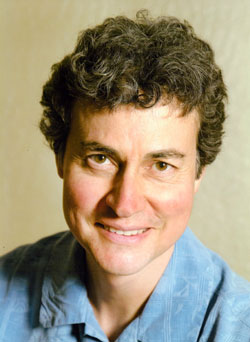 Peter Sultana, M.D. is a board-certified family physician in Santa Rosa, CA. His training includes a bachelor’s degree in Physics and Art History from Fordham University, a doctorate of Medicine from Case Western Reserve University, a diploma of specialization in Family Medicine from the University of Missouri, a certificate in Medical Aspects of Natural Family Planning from Creighton University, and a certificate in the Supervision of Therapeutic Fasting from the IAHP. He has worked in a broad spectrum of various clinical and research settings over the years, and currently runs a small family practice, and serves as a medical consultant to the participants of TrueNorth Health Center.
Peter Sultana, M.D. is a board-certified family physician in Santa Rosa, CA. His training includes a bachelor’s degree in Physics and Art History from Fordham University, a doctorate of Medicine from Case Western Reserve University, a diploma of specialization in Family Medicine from the University of Missouri, a certificate in Medical Aspects of Natural Family Planning from Creighton University, and a certificate in the Supervision of Therapeutic Fasting from the IAHP. He has worked in a broad spectrum of various clinical and research settings over the years, and currently runs a small family practice, and serves as a medical consultant to the participants of TrueNorth Health Center.
MH: You are a rare breed within the modern-day Natural Hygiene movement since, to my knowledge, it has only attracted a handful of medical doctors: Ron Cridland, Joel Fuhrman, Michael Klaper and, most recently, Stephan Esser. How did you as a physician arrive at this esteemed plateau?
PS: I think the concept of Natural Hygiene has probably been with me my whole life, but I wasn’t aware of it as a system. I think it was just the idea of living in harmony with nature that I grew up with. So the seeds were already there by the time I discovered Natural Hygiene in my twenties.
I was trying to eat a healthy diet and people noticed it. One day, one of my workmates said, “You know, you would really fit in well with this group of health-minded people that I know who meet once a month.” I decided to check it out, and I became part of a small group of about six people who were studying Natural Hygiene. I thought, “Yeah, this is for me.” One thing led to another, and I ended up going to NHA (National Health Association) conferences and meeting different people who worked in this field. I think the very first conference I attended was in 1989 in Miami Beach, Florida.
Were your parents vegetarians or at least health inclined?
My parents were health inclined but not vegetarian. As I grew up, I started asking questions like, “Which of these foods is healthier?” and noticed that the answers pointed toward more vegetables and less meat. Dairy and eggs were still the darlings of nutrition at the time, so it took me longer to see them for what they were.
A lot of people come to this way of living because of a health crisis. Was that the case with you?
No, however, I did notice changes as my diet got cleaner, and I definitely felt better internally. I recall having some acne on my back that dramatically cleared up when I changed how I ate. I think this occurred as a result of giving up dairy foods, which was probably one of the last things I did.
Was there one book or one hygienic physician in particular that inspired you?
Before I started going to NHA conferences, I tried to follow the advice from the people in my local hometown Natural Hygiene group, but none of them were health professionals. They had strong opinions and lots of advice, but in retrospect they had little experience and no accountability. I know they were well intentioned, but following their advice I ended up eating far too much raw food and found myself eventually declining in health.
Now that I think about it, in answer to your earlier question, I actually did have a health crisis. The irony is that contrary to the typical path you just alluded to, Natural Hygiene was actually causing my health crisis, not solving it. So I started going to NHA conferences and met more responsible people, and learned that there was a balance you had to hit between raw and cooked food. I talked to most of the doctors individually, and they gave excellent advice, particularly Dr. Ralph Cinque, whose compassion and earnestness touched me as he coached me out of the crisis. What I learned from this is that broad principles are a great starting point, but there are many factors that go into tailoring them to each individual. At this point, I began to appreciate the value of licensed health-care professionals in Natural Hygiene.
You hold a dual degree in Art History and Physics from Fordham University. That sounds like a long way from a career in medicine. Are you actually an artist?
I love art and have some talent, but few people would ever accuse me of being an artist. Growing up, I never aspired to being a doctor. My interests were in art and drama, as well as goodness, truth, beauty and God. So in college I started off by majoring in Art History. It was my way of getting a big picture of art in the world. Eventually, around sophomore year, the question came up, “Well, what are you going to do with this?” I certainly wasn’t a good enough artist nor an actor to even think about making a living with those. But I was told that architects got paid, so I started looking into that.
I needed to take some science classes, particularly physics, which I had never taken before. So I took the introductory physics class and ended up loving it. I was fascinated by the universal language and beautiful balance and symmetry of the natural world. Halfway through the semester, the chairman of the department invited me into his office and said, “You are doing extremely well with this; you would make a good physics major.” My first response was, “No thanks; I already have a major,” but later I thought about what he said and found that if I worked at it I could add a second major without giving up the first, and still graduate on time. I never really developed a strong passion for architecture, so I just finished college with that dual degree and then took a break.
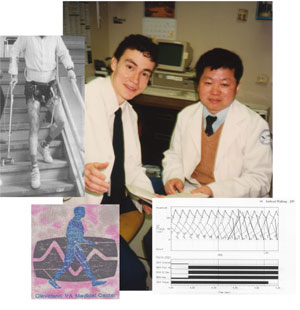 That summer, I moved back home to Cleveland and found a summer job at the Cleveland Health Education Museum. It was there that I started learning more about human biology. I worked on exhibits and taught guests about them. At the end of the summer, the job was over and I needed to find another one. Just down the road, the Cleveland VA Hospital had just posted an opening for a technician. I answered it and found myself in a research project focused on using electrical impulses controlled by computer technology to restore walking in paralyzed people (see photo at right). It was a lot of fun working with this multinational, multidisciplinary group of students, surgeons, Ph.D.s, and research subjects. The project had a great goal, but after a couple of years I found myself more interested in the lives of the human research subjects I worked with. I soon began to realize that the subjects’ mobility issues were often the least of their problems, and I was drawn into taking a more holistic view in helping them. That experience, combined with several of other storyline threads, ultimately came together at the age of 25 when I found myself being called to work as a doctor.
That summer, I moved back home to Cleveland and found a summer job at the Cleveland Health Education Museum. It was there that I started learning more about human biology. I worked on exhibits and taught guests about them. At the end of the summer, the job was over and I needed to find another one. Just down the road, the Cleveland VA Hospital had just posted an opening for a technician. I answered it and found myself in a research project focused on using electrical impulses controlled by computer technology to restore walking in paralyzed people (see photo at right). It was a lot of fun working with this multinational, multidisciplinary group of students, surgeons, Ph.D.s, and research subjects. The project had a great goal, but after a couple of years I found myself more interested in the lives of the human research subjects I worked with. I soon began to realize that the subjects’ mobility issues were often the least of their problems, and I was drawn into taking a more holistic view in helping them. That experience, combined with several of other storyline threads, ultimately came together at the age of 25 when I found myself being called to work as a doctor.
Tell me about attending Case Western Reserve Medical School.
It was wonderful, mostly. After college I chose to live in a cultural hub of Cleveland called University Circle, a one-square-mile neighborhood of major museums, colleges, music schools, and more. The thing that drew me there initially was the famous Cleveland Art Museum, the Cleveland Orchestra, and the Cleveland Institute of Art. So I was surrounded by all kinds of brilliant and broad-minded influences. I eventually came to know students and faculty at Case Western Reserve Medical School, and it started to grow on me; so it was an easy first choice for medical school. Once I was in the school, I found many of my classmates quite receptive to my perspectives on natural health. So, overall, it was a very good environment to learn and train. The hardest part was sleep deprivation. I think it took me seven years to recover from that.
Very few physicians are medical doctors in the Natural Hygiene movement; most of them have been chiropractors. I’m told that one of the reasons is the fear of the medical indoctrination in drugs and cures. Chiropractic takes a more holistic approach to health and recovery. Was this a challenge for you in becoming an M.D.?
Yes, some of it was. However, I started medical school with the firm conviction of health through natural healing, and I think that helped me absorb the information from a good perspective. In the first year you’re mainly studying basic anatomy, physiology, and how the body works, and there was little conflict with that. In the second year, you start learning more about diseases where things go wrong, and there wasn’t much conflict there either. However, in the third year, we started to bring in medicines, and I could see that some of the thinking was starting to go in the wrong direction.
I was surprised to find that a lot of our teachers were extremely biased. The only reason many were teaching there was not because they were good teachers, but because they had research grants. These grants came from pharmaceutical companies, and the more they were able to bring in that money, the more they were there teaching. It was hard being taught by people whose goal was to develop a product; often, that was a conflict of interest.
But at the same time I also felt like the world was going through a change. There was a growing specialty called “Family Medicine,” and the department was filled with holistic-minded people. There were a lot of medical students that shared my interest and focus on health. We would go out together to see talks by Drs. Dean Ornish and Neal Barnard. There were student groups that were interested in alternative medicine. I was actually asked to lead the AMA “Student Group on Humanistic Medicine” (an odd name, but that’s another conversation). I accepted, and the first thing I did was to invite Dr. Caldwell Esselstyn from the Cleveland Clinic to give us a talk. My fellow students were very receptive to his message, which is still consistent with the message he is giving today. He was just as intense and captivating then as he is now. Incidentally, I also invited Dr. D.J. Scott to speak, but he declined because he, and maybe wisely so, did not feel that it was his role to teach convictions. He was happy to teach people who wanted to follow natural living, but he wasn’t going to try to convert people.
Where did you do your residency after graduation?
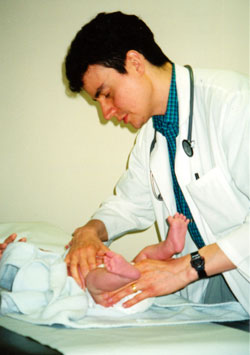 I did my residency training in Missouri. It was sort of on-the-job training. As a resident you are a licensed doctor and you are in charge of people’s medical care. My specialty was in Family Medicine, so my residency trained me for a broad range of things. It was surgery, medicine, geriatrics, intensive care, and neonatal units: the whole range of life and the whole range of diseases (see photo at right). In addition, I had my own practice in the outpatient clinics. At the end of my residency, we moved east to be closer to family. However, finding people to work with who could reinforce a truly health-promoting practice was challenging, so I gravitated more toward the West Coast.
I did my residency training in Missouri. It was sort of on-the-job training. As a resident you are a licensed doctor and you are in charge of people’s medical care. My specialty was in Family Medicine, so my residency trained me for a broad range of things. It was surgery, medicine, geriatrics, intensive care, and neonatal units: the whole range of life and the whole range of diseases (see photo at right). In addition, I had my own practice in the outpatient clinics. At the end of my residency, we moved east to be closer to family. However, finding people to work with who could reinforce a truly health-promoting practice was challenging, so I gravitated more toward the West Coast.
Speaking of similar mindsets, how did you find your way to TrueNorth Health?
I had always been aware of Dr. Alan Goldhamer and Dr. Jennifer Marano’s project that has come to be known as TrueNorth. I was impressed with its stable and steady growth. When I graduated they invited me to do an internship with them. When I arrived, we all hit it off really well, and I was warmly welcomed by not only them, but also Drs. Isabeau, Linzner, Dina, Anderson and Kim. It was a great resonating experience to have so many people working together, teaching the same message, and reinforcing each other. I think we each became more effective in what we did that way.
On the TrueNorth website it states that you have an interest in natural approaches to fertility. Have you found that couples who have adopted the hygienic lifestyle have better success with this very challenging area?
Thank you for appreciating how challenging and heart-wrenching that can be. It is true that many families we have worked with have called us back to give us good news on achieving pregnancy; and many women have reported the resolution or improvement of problems and pains in their reproductive organs. But there are so many factors involved in healthy fertility that we can’t say in isolation what made the difference. The field of Natural Family Planning studies the natural processes of fertility, and conservatively uses technology in a way that cooperates with those processes. I try to combine teaching a hygienic lifestyle with natural procreative technologies to get the best outcomes.
I think it was Dr. Joel Fuhrman who once said that it was important to distinguish between historical hygiene and hysterical hygiene, and give some traditional hygienic thinking more thoughtful and sober analysis. I would like to ask your view on some of these areas. The first and perhaps oldest notion is that “all drugs are poisons” and, therefore, you want to avoid them like the proverbial plague. As a medical doctor you have these tools at your disposal, but is there a place for them?
I do believe all drugs are poisons, but you’re right that there is a role for them. Sometimes taking a toxic medication is less damaging than doing nothing. There is no wonder drug without side-effects; you have to weigh the risks and benefits in each situation. Lots of people have high blood pressure, but each person may have a different problem causing it. Amazingly, with the aggressive, holistic changes we promote, most of the time the blood pressure improves no matter what the cause was.
Sometimes, however, despite these changes, blood pressure remains too high to be safe, and the patient bears the risk of blowing a blood vessel in their brain and ending up with a stroke. Often they would then be better off taking a toxic medication than having a stroke. Keep in mind that the body, besides wanting to be healthy, is very aware of the reality that there are toxic things in the environment. The body is built to handle toxins. So if you put a toxic medicine in, for the most part (if you’re doing it intelligently), it can clear away a lot of the toxicity and you can live with it in a way that is safer than if you had left it alone and risked having a stroke.
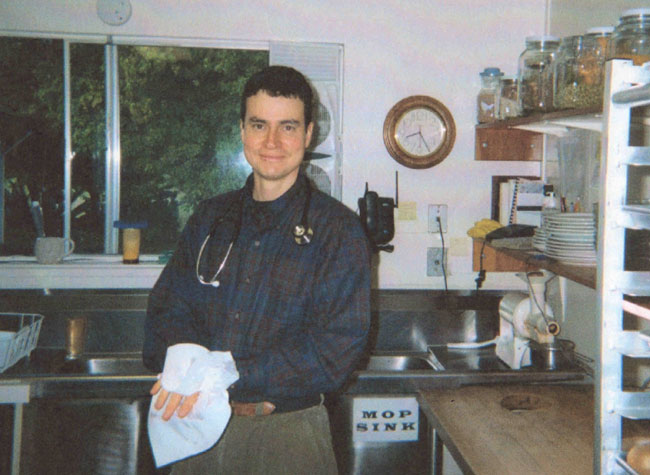 Above: Dr. Sultana in the kitchen of TrueNorth Health Center when it was located in Penngrove, CA.
Above: Dr. Sultana in the kitchen of TrueNorth Health Center when it was located in Penngrove, CA.
Another issue is the advocacy or efficacy of raw foods, and the old hygienic notion that “cooked foods are dead foods” and that the pristine diet is a raw one. You mentioned earlier that in the early stages of your journey to Natural Hygiene you focused too much on raw foods. What is your perspective on the raw food diet?
The raw food diet was probably the thing that first drew me to the Natural Hygiene community. The idea of just picking up food in its natural state and eating it is very attractive. In reality it doesn’t really work well for most people because they don’t have the capacity to digest and be satiated on food that is 100% raw. You can make the food more bioavailable by conservatively cooking it, mainly steaming or baking. But the notion that “cooked food is dead food” is really missing the forest for the trees. Is food supposed to be “alive” when you eat it? What does that mean? If that refers to enzymes that are destroyed by cooking, keep in mind that the bulk of our digestion is done by our own internal enzymes. If you try to take in food that you cannot digest with the hope that it is carrying enzymes that will do it for you, you are going to be very disappointed. Very few nutrients are destroyed through cooking our food relative to the hundreds of good nutrients that are absorbed and active.
So does conservative cooking preserve or destroy the enzymes?
Mostly it preserves the nutrients, some are destroyed, some only become bioavailable by cooking, and most are retained. You can conclude by physical examination and blood tests just how much nutrients a person is getting. Someone on a mix of raw and cooked whole foods can actually have a much better nutrient profile than someone on a purely raw diet. Cooking can destroy some nutrients and deliver other nutrients. Most people need both to thrive.
A powerful notion among hygienic physicians is that the body has a pretty remarkable ability to cleanse, repair and restore itself? Is that the case?
The body does indeed have a remarkable ability to do so. However, I am concerned that in our 21st century we are hitting the limit on that. I do not think the body is equipped to keep up with the amount of chemicals and toxic exposures that it’s being hit with these days. The early hygienists were right; the body was able to recover and handle toxicities if they were reasonably managed. Now we are living in a soup of toxic pollution, and the body doesn’t keep up as well. Dr. William Esser, one of the early hygienists, had one of the longest careers in supervising people through healthy transformations and fasting. He had a huge amount of wisdom built up over the years, and one of the observations that he made toward the end of his career was that people weren’t getting as well with fasting. He was not seeing as many of the dramatic recoveries that he used to back when he first started doing this. He recognized, wisely so, that the world had changed and the old principles written back then aren’t so simple anymore. We can no longer think that all you have to do is eat some healthy food and do a little fasting, and you will recover. There is a lot of damage that has been done, and the body is at the edges of its ability to try to undo it. Yes, people still get amazing improvements, but there are some injuries that cannot be undone. This is why our message of prevention is so important.
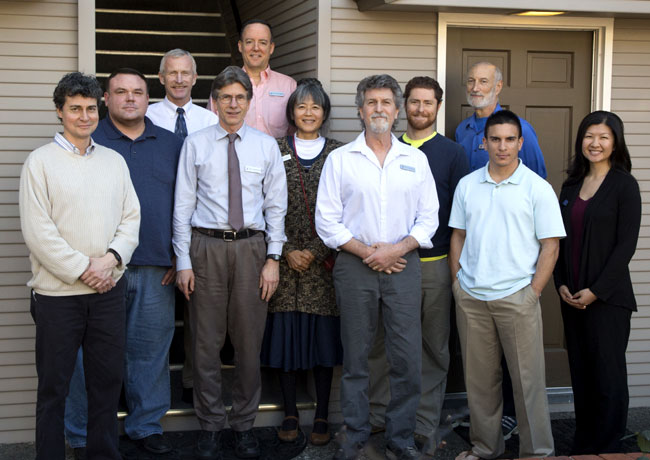 Above: Dr. Sultana in 2014, at far left, with his fellow TrueNorth clinicians in Santa Rosa, CA.
Above: Dr. Sultana in 2014, at far left, with his fellow TrueNorth clinicians in Santa Rosa, CA.
What conditions do you see that still respond well to fasting and a hygienic diet?
Organ damage can be difficult. For example, if the kidney, which is a major detoxifying organ, has been damaged, there is little room for improvement. It can reach a level of tissue damage and scarring that is final. At that point, the high blood pressure is not going to turn around. But in general, the body’s organ systems are very resilient. If you remove the toxins, the body recovers and the symptoms decrease: the blood pressure goes down, the sinuses clear out, the aches and pains clear up, and there is an overall rejuvenation that occurs. As for particular conditions, hypertension and diabetes are two of the easier, measurable things we see that turn around. While fibromyalgia is not as measurable, the subjective reports of healing are very exciting.
Do most people fast who come to TrueNorth?
I think maybe 50% to 60% do a fast. More than fasting, TrueNorth is an environment to take time out of life to cleanse, get empowered, and then resume life with a touched-up or, in some cases, much overhauled daily routine, particularly a food routine. Fasting may not be part of a stay at TrueNorth, but everyone cleanses. It turns out that many people think they are living a healthy, whole-food, plant-based diet when in fact they are not. When they come here, they find the diet is much more cleansing that they were even aware of, and it takes their health up a level.
Isn’t it fascinating that this is essentially the kind of superior nutrition that Dr. Shelton, Dr. Esser, Dr. Benesh, Dr. Gross, Dr. Scott, and their many colleagues advocated 50 years ago?
It is fascinating. And it tells you that we have a natural instinct for what’s right for our body. They knew it; they didn’t need the science. Dr. Shelton ridiculed “science” because the scientific community had betrayed its role. We don’t need so many studies to tell us what good healthy living is; we knew what it was years ago. While it is great to have so many studies coming out affirming this, it does seem silly to hear the news that eating a diet rich in fruits and vegetables actually prevents cancer. So I think it is important to listen to those instincts and think them through clearly, and not just write them off as unproven teaching. Shelton and the other teachers were right. They had the right instincts, and what they taught followed from that.
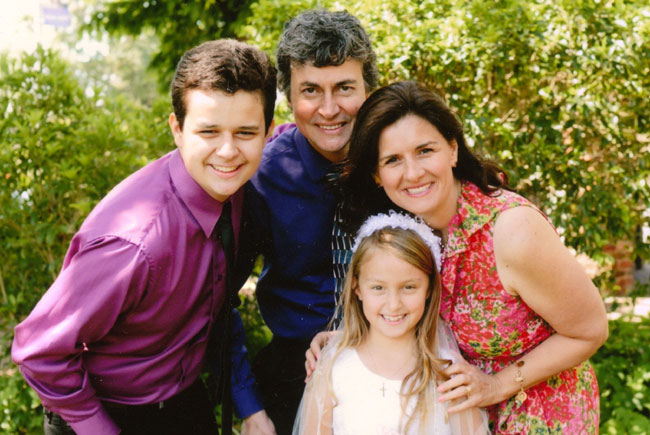 Above: Dr. Sultana with his wife and children.
Above: Dr. Sultana with his wife and children.
So tell me about the Sultana family.
Well, that could be a very long story, as our family spans the globe. But here at home is my lovely wife, Constance, whom I have known since I was 18 years old. She has nourished my life more than any vegetable you could name. We have two kids at home, Michael, age 17, who is just finishing up high school this year, questioning everything, and is currently tackling the big question of what to do next; and Valerie, age 9, who is currently mentoring me in sensing the joy in every moment.
Do you have your own heroes in the Natural Hygiene movement? You mentioned Dr. Cinque and Dr. Esser. Are there others who inspired you along the way?
Dr. Cinque was a great connection because he was very humane and caring. Dr. Scott was always wonderful to learn from; and since he and I were both in Cleveland, he was always available for questions. He would share with me his own observations on physiology and healing. Also around that time a young Dr. John McDougall came to speak at my town hall, and he got my wheels turning. At NHA conferences it was always inspiring to talk to Drs. Goldhamer, Fuhrman, Sabatino, and the Burtons. At one conference, I had the great fortune of meeting Dr. Michael Klaper, who at the time was a “lone ranger” professor of health through nutrition, and has since brought his wisdom and experience to TrueNorth. And of course there was Dr. Ron Cridland. He was the medical doctor who was working at TrueNorth when I first looked into working there. He was incredibly generous and forthcoming in his advice on how to set up a practice in affiliation with TrueNorth. I can’t say enough about his role in getting me started.
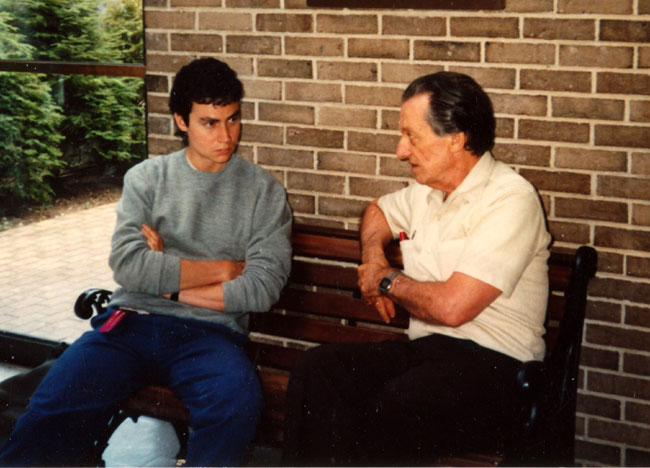 Above: Peter Sultana in his college years, chatting with Dr. D.J. Scott.
Above: Peter Sultana in his college years, chatting with Dr. D.J. Scott.
What is your role at TrueNorth? Do you see all of the patients, and do you have your own private practice?
I keep an office now in the TrueNorth building, and serve as a medical consultant to the program participants. For many years I did see each one, coordinating their program, care, fasting, medications, and diet from start to finish. But TrueNorth has grown, and there are now so many people that come through every year that more doctors are needed. Fortunately, more doctors have come in the last few years, namely Drs. Klaper and Lorn, and more recently Dr. Veress. But we are just the medical layer. As you know, the underlying backbone of the TrueNorth program has always been the chiropractic staff of Drs. Goldhamer, Linzner, Isabeau, and Yuen. They see all of the patients day-in and day-out, guide them in their healing process and, when needed, help them with traditional drugless treatments.
Do you and your TrueNorth colleagues group-consult about patients?
All the time. One of the best things about having all of us working under one roof, and with the same patients, is that we get to meet formally at least once a week to go over every single patient. Throughout the week we keep the conversation going informally as we bounce around ideas and remind each other of the overall patient goals of function, relief, empowerment, and healing.
Dr. Sultana, I think if Dr. Shelton were reading this interview he would be smiling right now. Thanks for your great contributions to the Natural Hygiene movement and your support of the NHA over the years. Thanks for sharing your wonderful experience and perspective.
You’re welcome, I hope it is helpful.
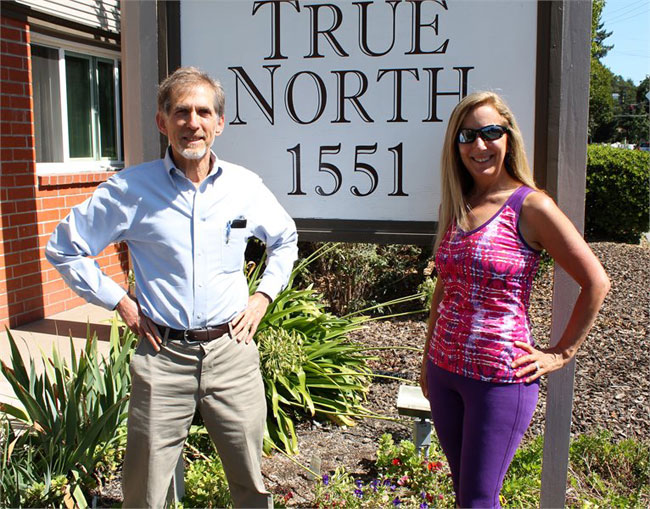
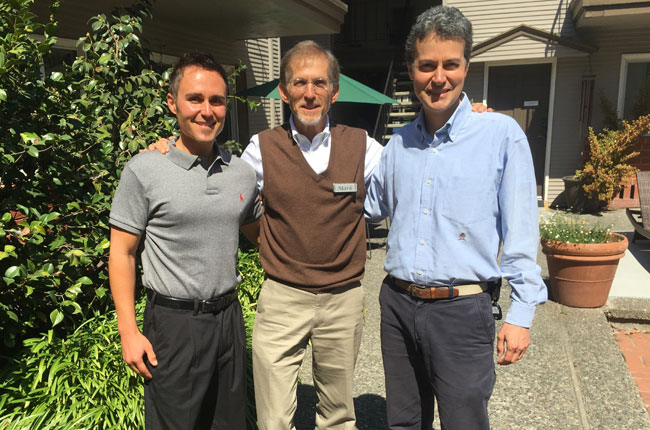
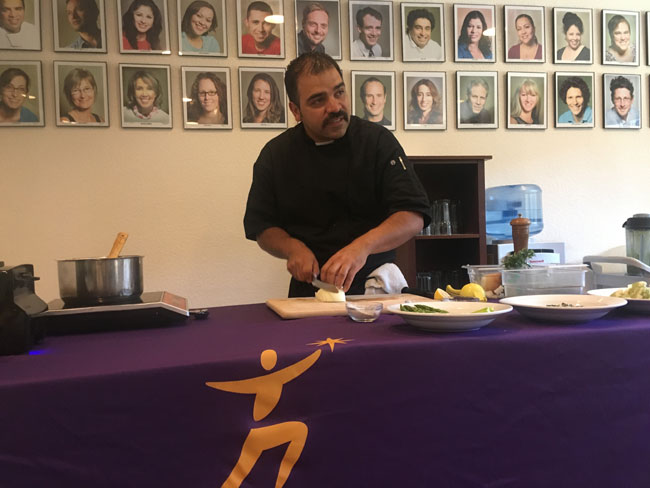
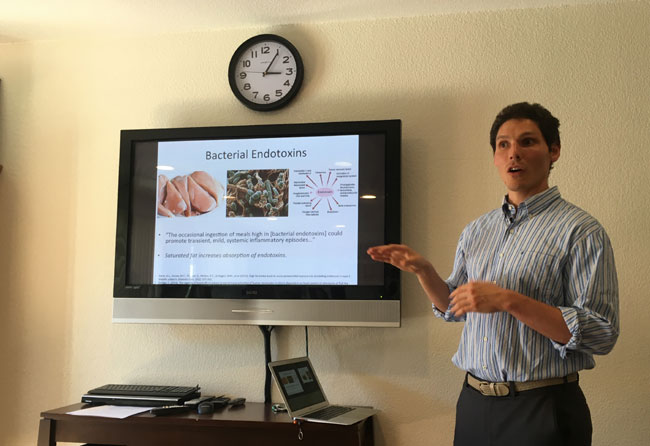
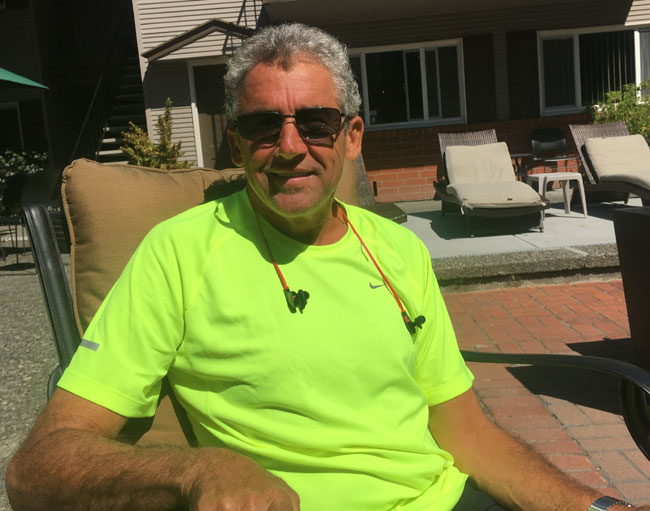
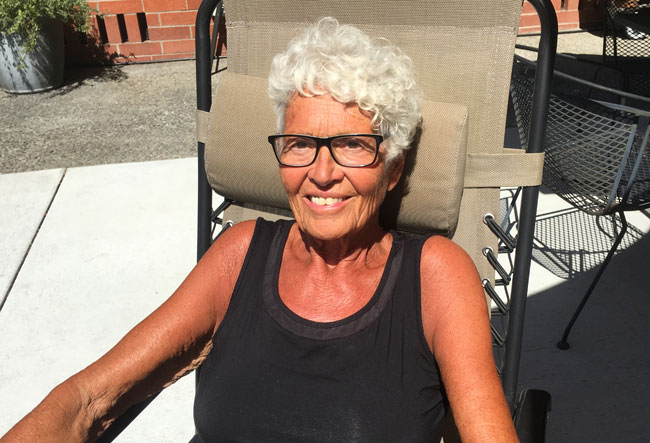
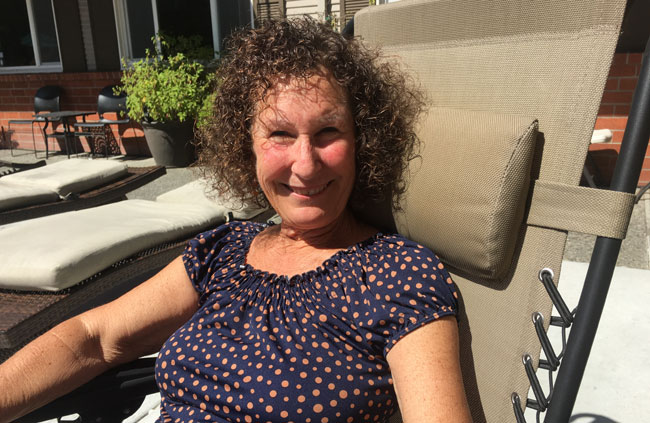
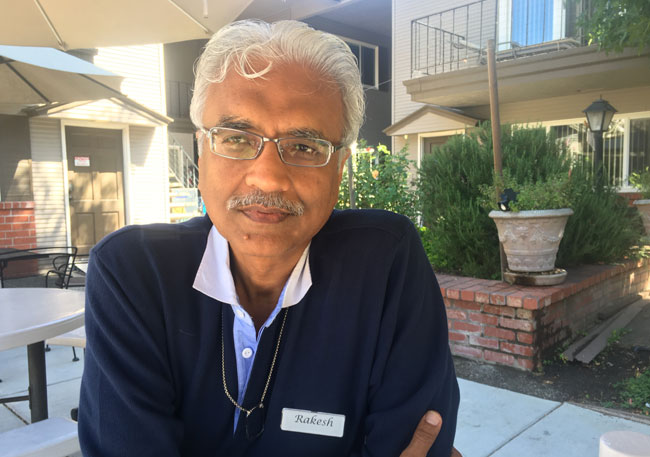
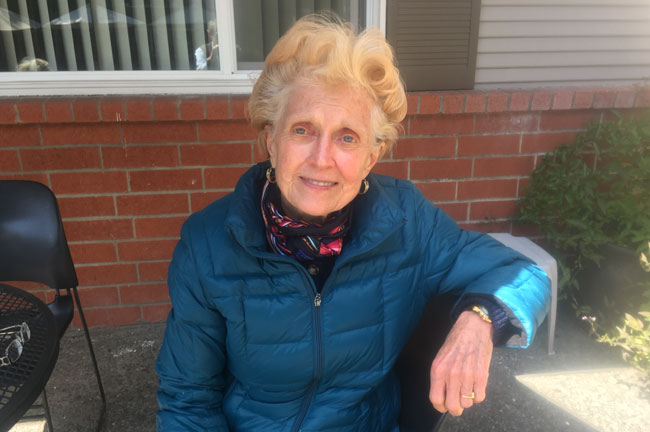
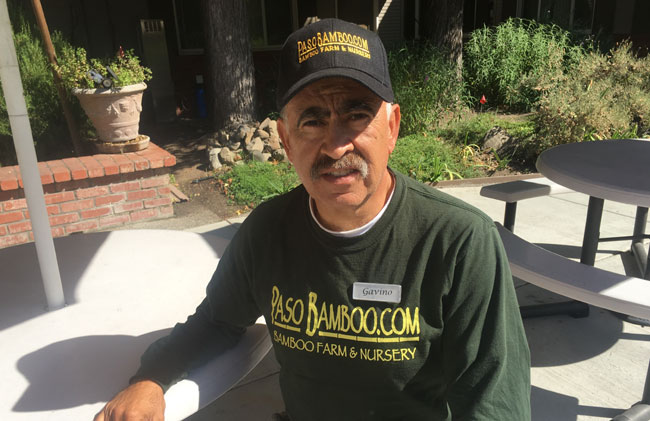
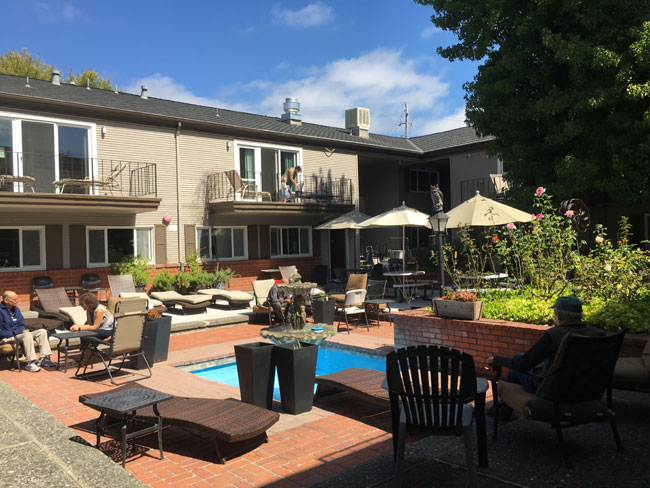

 Peter Sultana, M.D. is a board-certified family physician in Santa Rosa, CA. His training includes a bachelor’s degree in Physics and Art History from Fordham University, a doctorate of Medicine from Case Western Reserve University, a diploma of specialization in Family Medicine from the University of Missouri, a certificate in Medical Aspects of Natural Family Planning from Creighton University, and a certificate in the Supervision of Therapeutic Fasting from the IAHP. He has worked in a broad spectrum of various clinical and research settings over the years, and currently runs a small family practice, and serves as a medical consultant to the participants of TrueNorth Health Center.
Peter Sultana, M.D. is a board-certified family physician in Santa Rosa, CA. His training includes a bachelor’s degree in Physics and Art History from Fordham University, a doctorate of Medicine from Case Western Reserve University, a diploma of specialization in Family Medicine from the University of Missouri, a certificate in Medical Aspects of Natural Family Planning from Creighton University, and a certificate in the Supervision of Therapeutic Fasting from the IAHP. He has worked in a broad spectrum of various clinical and research settings over the years, and currently runs a small family practice, and serves as a medical consultant to the participants of TrueNorth Health Center. That summer, I moved back home to Cleveland and found a summer job at the Cleveland Health Education Museum. It was there that I started learning more about human biology. I worked on exhibits and taught guests about them. At the end of the summer, the job was over and I needed to find another one. Just down the road, the Cleveland VA Hospital had just posted an opening for a technician. I answered it and found myself in a research project focused on using electrical impulses controlled by computer technology to restore walking in paralyzed people (see photo at right). It was a lot of fun working with this multinational, multidisciplinary group of students, surgeons, Ph.D.s, and research subjects. The project had a great goal, but after a couple of years I found myself more interested in the lives of the human research subjects I worked with. I soon began to realize that the subjects’ mobility issues were often the least of their problems, and I was drawn into taking a more holistic view in helping them. That experience, combined with several of other storyline threads, ultimately came together at the age of 25 when I found myself being called to work as a doctor.
That summer, I moved back home to Cleveland and found a summer job at the Cleveland Health Education Museum. It was there that I started learning more about human biology. I worked on exhibits and taught guests about them. At the end of the summer, the job was over and I needed to find another one. Just down the road, the Cleveland VA Hospital had just posted an opening for a technician. I answered it and found myself in a research project focused on using electrical impulses controlled by computer technology to restore walking in paralyzed people (see photo at right). It was a lot of fun working with this multinational, multidisciplinary group of students, surgeons, Ph.D.s, and research subjects. The project had a great goal, but after a couple of years I found myself more interested in the lives of the human research subjects I worked with. I soon began to realize that the subjects’ mobility issues were often the least of their problems, and I was drawn into taking a more holistic view in helping them. That experience, combined with several of other storyline threads, ultimately came together at the age of 25 when I found myself being called to work as a doctor. I did my residency training in Missouri. It was sort of on-the-job training. As a resident you are a licensed doctor and you are in charge of people’s medical care. My specialty was in Family Medicine, so my residency trained me for a broad range of things. It was surgery, medicine, geriatrics, intensive care, and neonatal units: the whole range of life and the whole range of diseases (see photo at right). In addition, I had my own practice in the outpatient clinics. At the end of my residency, we moved east to be closer to family. However, finding people to work with who could reinforce a truly health-promoting practice was challenging, so I gravitated more toward the West Coast.
I did my residency training in Missouri. It was sort of on-the-job training. As a resident you are a licensed doctor and you are in charge of people’s medical care. My specialty was in Family Medicine, so my residency trained me for a broad range of things. It was surgery, medicine, geriatrics, intensive care, and neonatal units: the whole range of life and the whole range of diseases (see photo at right). In addition, I had my own practice in the outpatient clinics. At the end of my residency, we moved east to be closer to family. However, finding people to work with who could reinforce a truly health-promoting practice was challenging, so I gravitated more toward the West Coast. Above: Dr. Sultana in the kitchen of TrueNorth Health Center when it was located in Penngrove, CA.
Above: Dr. Sultana in the kitchen of TrueNorth Health Center when it was located in Penngrove, CA. Above: Dr. Sultana in 2014, at far left, with his fellow TrueNorth clinicians in Santa Rosa, CA.
Above: Dr. Sultana in 2014, at far left, with his fellow TrueNorth clinicians in Santa Rosa, CA. Above: Dr. Sultana with his wife and children.
Above: Dr. Sultana with his wife and children. Above: Peter Sultana in his college years, chatting with Dr. D.J. Scott.
Above: Peter Sultana in his college years, chatting with Dr. D.J. Scott.